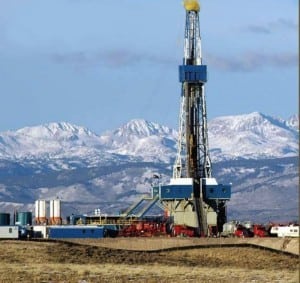By Sehoy Thrower
This week, the Obama administration announced its plan to cut methane pollution from oil and gas production by up to 45% by 2025. This is the latest in a series of attempts by the Obama administration to regulate the oil and gas industry with the EPA under the Clean Air Act.
The methane plan calls for the Environmental Protection Agency to propose methane reductions at new oil and gas sites by summer 2015 and issue a final rule next year. The goal is to cut the industry’s emissions 40 to 45 percent below the 2012 level by the year 2025.
Despite being an important expansion of greenhouse gas regulations under the Clean Air Act, the proposed rule would not address methane leaking from existing oil and gas wells and delivery networks. Rather, the administration said it would work with industry on voluntary efforts to cut methane from existing oil and gas sites, which studies have found to be riddled with leaks.
Citizens’ Climate Lobby Executive Director Mark Reynolds expressed CCL’s support for the President’s proposal:
“Not enough attention is being paid to methane leakage, and the administration’s announcement shines a huge spotlight on the problem so that we can determine the extent of the leakage and the steps needed to reduce it. Natural gas has great potential to be an energy source far less harmful to the climate than coal. With methane being 86 times as potent at carbon dioxide, however, leakage from extraction and transport could actually make natural gas worse than coal. This leakage needs to be reduced to acceptable levels. Ultimately, Congress must give us a revenue-neutral price on ALL greenhouse gases that motivates the free market to reduce these dangerous emissions.”
Other environmental groups largely agree that the focus on methane has been long-awaited. National Wildlife Federation President and CEO Collin O’Mara issued this statement:
“With methane pollution disrupting our climate 86 times more than carbon pollution, improving methane capture is a key piece of the Obama administration’s plan to protect wildlife and our natural resources from climate impacts.”
However, many environmental groups criticized the weakness of the methane plan. Rhea Suh, President of the Natural Resources Defense Council, said in a statement:
“Curbing the rampant methane waste from the oil and gas industry is the biggest new step the White House can take to fight climate change. Meeting the administration’s reduction goal, however, will require EPA to curb methane pollution from all existing oil and gas operations across the nation, not just those in some parts of the country. Taking such industry-wide action would be a powerful follow-up to the President’s historic action on carbon pollution from power plants.”
Environmentalists like Conrad Schneider of the Clean Air Task Force complained that restricting rules to new sources of methane will leave most of the problem untouched. Schneider told InsideClimate News:
“While setting methane standards for the first time is an important step, failing to immediately regulate existing oil and gas equipment nationwide misses 90 percent of the methane pollution from the industry. The Administration is proposing to fight methane pollution with one hand tied behind its back, not using the full range of powers under the Clean Air Act to cut these emissions…
“We have decades of evidence to show collaboration with industry hasn’t worked. Nothing ever stopped them from taking the voluntary steps over the last decade but voluntary efforts haven’t resulted in the cuts needed.”
Republicans in Congress were quick to assail the President’s proposal. The Hill reported a statement from Rep. Fred Upton (R-Mich.), chairman of the Energy and Commerce Committee, and Rep. Ed Whitfield (R-Ky.), chairman of the committee’s Energy and Power subpanel:
“Studies show that while our energy production has significantly increased, methane emissions have continued to decline. This is something that should be celebrated, not bound by new red tape.”
While the EPA has reported a decline in methane emissions between 1990 and 2012, the agency relies on figures provided by the oil and gas industry, which many observers suspect are lower than the actual numbers.
Sehoy Thrower is an intern in the Atlanta office of Citizens’ Climate Lobby.



